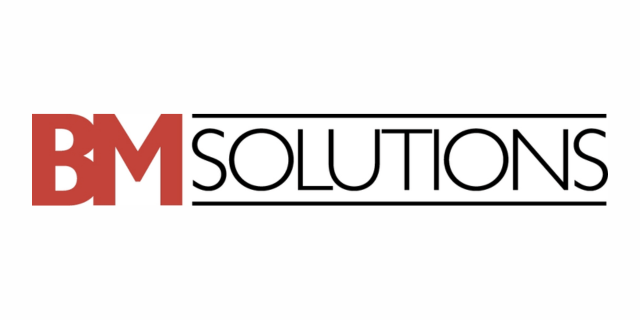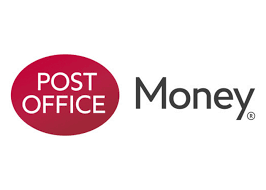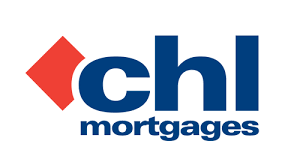Buy to Let Remortgage Introduction
For landlords and property investors, a buy-to-let remortgage offers an opportunity to improve the terms of their mortgage, access additional funds, and optimise rental investments. Buy to let mortgages are specifically designed for those purchasing property to rent out.They differ from standard residential mortgages in terms of eligibility criteria, deposit requirements, interest rates, and repayment structures.
This comprehensive guide explores what a buy-to-let remortgage is, the key benefits, the process involved, and which lenders are the top choices for these remortgages. Understanding the specifics of remortgaging can help landlords make the most of their property portfolios and increase rental yields.
What is a Buy-to-Let Remortgage?
A buy-to-let remortgage is the process of switching your existing mortgage on a rental property to a new deal, either with your current lender or a new one.
To understand how buy-to-let mortgages work, it’s important to know the difference between interest only mortgages and repayment mortgages. With an interest only mortgage, you only pay the interest each month and the amount borrowed must be repaid in full at the end of the term, often by remortgaging or using the property’s equity.
In contrast, a repayment mortgage involves paying both the interest and part of the loan each month, so the full amount is paid off by the end of the term.
The amount you can borrow with a buy-to-let remortgage depends on factors such as your rental income and the property’s value. Lenders typically set a maximum loan amount based on a percentage of the property value, so the higher your property’s value, the more you may be able to borrow.
After the initial property purchase, a buy-to-let remortgage can be used to switch deals or release equity for further investments.
Landlords often pursue remortgages for several reasons including securing a lower interest rate, switching from an interest-only to a repayment mortgage, or releasing equity from the property to fund additional investments or other expenses.
Benefits of a Buy-to-Let Remortgage
Remortgaging a buy-to-let property offers numerous advantages for landlords and property investors, including:
- Access to Better Rates: With mortgage rates fluctuating, remortgaging allows you to secure a more competitive rate, potentially lowering monthly payments and increasing profit margins.
- Release Equity: Remortgaging enables you to release equity built up in your property. This can provide a lump sum for further property investments, refurbishments, or other financial needs.
- Switch Mortgage Types: You may choose to switch from an interest-only mortgage to a repayment mortgage (or vice versa) based on financial goals, tax efficiency, or cash flow considerations.
- Debt Consolidation: Some landlords use buy-to-let remortgages to consolidate other debts, which can simplify finances and reduce overall interest costs.
- Improve Rental Yields: By lowering the interest rate or adjusting mortgage terms, landlords can increase rental yields, making their investment properties more profitable.
- Additionally, increasing rent or optimising rent levels after remortgaging can further boost the profitability of your buy-to-let property.
Understanding Mortgage Rates for Buy-to-Let Remortgages
When considering a buy-to-let remortgage, understanding how mortgage rates work is essential for maximising your investment returns. Buy-to-let mortgage rates are generally higher than those for a standard residential mortgage, reflecting the increased risk lenders associate with rental properties.
The rate you’re offered will depend on several factors, including the property’s value, your rental income, and your credit history. Even a small difference in mortgage interest rates can have a significant impact on your monthly repayments and the total amount you repay over the life of the loan.
It’s important to compare mortgage rates from a range of lenders, as rates can vary widely and the right deal could lead to substantial savings. Factors such as the loan-to-value ratio, the type of buy-to-let property, and your overall borrowing profile will influence the rates available to you.
Working with a mortgage broker can be invaluable, they have access to a wide range of buy-to-let mortgage deals and can help you navigate the complexities of the market to find the most competitive rate for your circumstances. By carefully considering mortgage rates and how they affect your borrowing costs, you can make informed decisions that enhance the profitability of your rental property.
The Buy-to-Let Remortgage Process
The remortgage process involves several key steps. Here’s a detailed breakdown:
- Review Your Current Deal: Start by reviewing your current deal including your existing mortgage terms, early repayment charges, fees, and any restrictions. Understanding the terms of your current agreement will help determine whether a remortgage is financially beneficial and if there are any costs involved in switching.
- Assess Your Financial Goals: Decide what you aim to achieve by remortgaging. Are you looking for better rates, releasing equity, or switching mortgage types? Knowing your goals will help you select the right mortgage product.
- Check Your Credit Profile: A strong credit profile can improve your chances of securing the best rates. Review your credit report for any issues, especially if you’re seeking a larger remortgage amount.
- Compare Mortgage Deals: Research the best buy-to-let remortgage deals available, either through an independent broker or by contacting lenders directly. A broker can provide access to exclusive deals not available to the general public.
- Obtain an Agreement in Principle: Before submitting a full application, obtain an agreement in principle from your chosen lender. This agreement will give you an indication of how much you could borrow based on your financial circumstances, property value, and expected rental income.
- Submit Your Mortgage Application: Once you’ve selected a lender and mortgage product, submit your mortgage application for the buy-to-let remortgage. You’ll need to provide proof of income, credit history, property valuation, and potentially other financial documents.
- Valuation and Underwriting: The lender will conduct a property valuation and underwriting process to assess the loan-to-value (LTV) ratio and rental income. They will use this information to determine how much you could borrow, taking into account the property’s value and the expected rental income. They may also verify your financial background and creditworthiness.
- Completion and New Terms: If approved, your new mortgage terms will take effect, and any released funds will be available. Your new mortgage repayments will start as per the updated schedule.
Key Considerations When Remortgaging a Buy-to-Let Property
- Loan-to-Value Ratio (LTV): Lenders typically offer competitive rates for LTV ratios under 75%. If your property has appreciated, you may be able to secure a better rate.
- Early Repayment Fees: Check if your current mortgage has early repayment charges, which can affect the overall cost of remortgaging.
- Rental Income Requirements: Lenders often require rental income to cover at least 125% -145% of the mortgage repayments. This “rental cover ratio” helps lenders assess the sustainability of the mortgage.
- Personal Finances: If you’re remortgaging to release equity, ensure you have a solid financial plan for managing any additional funds.
If you fail to keep up with mortgage repayments on your buy-to-let property, your property could be repossessed by the lender.
Eligibility Criteria for a Buy-to-Let Remortgage
To be eligible for a buy-to-let remortgage, applicants must meet specific lender requirements. Eligibility criteria vary among lenders, but common requirements for a buy-to-let remortgage include:
- Minimum Income: Many lenders have a minimum income requirement for buy-to-let applicants, usually around £25,000 per year. Some specialist lenders don’t have a minimum income requirement.
- Loan-to-Value Limits: Most lenders cap LTV ratios at 75-80% for buy-to-let remortgages. Higher LTV ratios are possible but may come with higher rates.
- Good Credit History: A clean credit record improves your chances of securing the best remortgage rates.
- Age Restrictions: Some lenders have minimum and maximum age limits for applicants. Age limits may range from 21 to 75, depending on the lender’s criteria. Some specialist lenders will go above this age cap.
- First Time Buyer: First time buyers can be eligible for a buy-to-let remortgage if they meet the lender’s specific criteria.
Eligibility for buy-to-let remortgages often differs from residential mortgages, with buy-to-let options typically requiring higher deposits, different income assessments, and stricter LTV ratios compared to standard residential mortgage products.
Legal Fees and Costs Involved in Buy-to-Let Remortgaging
Remortgaging a buy-to-let property comes with a range of fees and costs that landlords should factor into their decision-making process. Key expenses include valuation fees, which are charged by the lender to assess the current value of your property, and arrangement fees, which cover the cost of setting up your new mortgage deal.
Legal fees are another important consideration, as you’ll need a solicitor or conveyancer to handle the legal aspects of the remortgage, such as transferring the mortgage and updating the property’s title.
These costs can vary significantly between lenders and mortgage deals, so it’s crucial to compare offers carefully. Some lenders may include free valuation or legal services as part of their remortgage package, which can help reduce your upfront expenses.
However, always check the fine print to ensure there are no hidden charges. A mortgage broker can help you understand the full range of fees involved and identify deals that offer the best overall value. By accounting for all legal fees and associated costs, you can ensure your buy-to-let remortgage is both cost-effective and aligned with your investment goals.
Top Lenders for Buy-to-Let Remortgages
Several lenders specialise in buy-to-let remortgages, offering competitive rates and flexible terms:
Lender Features Maximum LTV Notes NatWest Buy-to-let remortgages with competitive fixed-rate deals, flexible options for multiple properties Up to 75% Suitable for landlords with multiple properties Barclays Wide range of buy-to-let remortgage products; interest-only and repayment mortgages Not specified Caters to individual landlords and limited companies Virgin Money Competitive interest rates, allows multiple properties on one mortgage account Up to 75% Aldermore Specialist lender for unique income streams or complex portfolios Up to 80% Rates vary depending on financial background The Mortgage Works (TMW) Offers interest-only and repayment structures Up to 80% Subsidiary of Nationwide Precise Mortgages Flexible options for landlords with non-traditional incomes or complex credit histories Up to 75% Metro Bank Competitive remortgages for personal and limited company landlords, fixed and variable rates Up to 75%
Finding the Best Buy-to-Let Remortgage Deal
Securing the best buy-to-let remortgage deal involves more than just finding the lowest interest rate. Landlords should start by reviewing their current mortgage deal and assessing whether switching could lead to better terms or lower monthly repayments. Key factors to consider include your rental income, the current value of your property, and your credit profile, as these will influence the mortgage rates and deals available to you.
It’s also important to look at the full range of fees associated with remortgaging, such as arrangement fees, valuation fees, and any early repayment charges on your existing mortgage. Comparing mortgage deals from multiple lenders can help you identify the most competitive options, and a mortgage broker can provide expert advice tailored to your circumstances.
Don’t forget to consider the tax implications of remortgaging, including potential changes to your capital gains tax liability or land transaction tax obligations if you’re expanding your portfolio.
By carefully evaluating all these factors mortgage rates, fees, eligibility criteria, and tax considerations you can find the right buy-to-let remortgage deal, to optimise your rental income and support your long-term investment strategy.
Seeking professional advice and comparing deals thoroughly will help you make the most informed and profitable decision for your property portfolio.
Buy-to-Let Remortgage for Expanding Your Property Portfolio
For landlords looking to grow their property portfolio, remortgaging can provide essential funding. Selling a buy-to-let property is another method to access equity for expanding your property portfolio, though it involves different financial considerations.
By releasing equity from one property, investors can use the proceeds as a down payment for additional buy-to-let properties, allowing them to expand their portfolio without needing additional savings. Lenders will typically consider rental yield and LTV when assessing applications for buy-to-let expansion, so it’s essential to have a strong property portfolio and rental income projections.
Switching from Interest-Only to Repayment Mortgage
If you’re currently on an interest-only mortgage, a remortgage is an opportunity to switch to a repayment mortgage. Doing so allows you to gradually pay down the loan principal, building equity in the property. While repayment mortgages have higher monthly payments, they reduce overall debt and build property ownership over time, which is advantageous for long-term investment goals.
Final Thoughts on Buy-to-Let Remortgages
A buy-to-let remortgage offers landlords various financial and strategic benefits, from securing better rates to expanding property portfolios. By understanding the remortgage process, eligibility criteria, and lender options, landlords can make informed decisions that enhance the profitability of their rental investments.
With competitive options from lenders like NatWest, Barclays, Aldermore, and Virgin Money, landlords can find tailored remortgage solutions to meet their goals. For the best deals, landlords may also benefit from working with a mortgage broker, who can guide them through complex requirements and unlock exclusive offers.
Get help from an experienced mortgage broker
You can speak to one of our specialist mortgage brokers who would be able to guide you through the process. They will advise if there is a lender available and the maximum loan amount based on your circumstances. We are a whole of market mortgage brokerage with access to all lenders. Call us on 01332 470400 or complete the form with your details for us to give you a call back.
What our customers say
Marlon
25 Apr 2025
Showing our favourite reviews

Always attentive, helpful and efficient
Jonathan, 27 Jan 2025

Best Mortgage Broker in the UK!
Liam, 26 Nov 2024

Ben was really helpful in helping me…
George, 28 Aug 2024
FAQs
What is a buy-to-let remortgage and how does it work?
A buy-to-let remortgage allows landlords to switch their current mortgage deal to a new one, either to secure better rates, change mortgage types, or release equity. It works much like a standard remortgage but is assessed on rental income and property value rather than personal residence.
Why should I consider remortgaging my buy-to-let property?
Remortgaging can help you:
Access better interest rates
Switch between interest-only and repayment mortgages
Release equity for new investments
Consolidate debt or reduce monthly payments
Increase rental yield by improving financial efficiency
How much can I borrow with a buy-to-let remortgage?
The loan amount depends on your property’s value and rental income. Lenders usually cap the loan-to-value (LTV) ratio at 75–80%, and may require rental income to cover 125–145% of the monthly mortgage payments.
What are the costs involved in a buy-to-let remortgage?
Key costs include:
Valuation fees
Arrangement/booking fees
Legal/conveyancing fees
Early repayment charges on your current mortgage (if applicable)
Some lenders offer deals that include free valuations or legal work, so always compare the full cost—not just the interest rate.
Can I remortgage to expand my property portfolio?
Yes. Many landlords use a buy-to-let remortgage to release equity from one property as a deposit for purchasing another. This can be a tax-efficient way to grow your portfolio, provided the rental yield supports the additional borrowing.
Ready to Take the First Step?
Whether you’re a first-time buyer, remortgaging, or moving home, bad credit doesn’t have to hold you back.
Understanding credit scoring can help you prepare for a mortgage application. You can speak to one of our specialist mortgage brokers who would be able to guide you through the process. They will advise if there is a lender available and the maximum loan amount based on your circumstances. We are a whole of market mortgage brokerage with access to all lenders.































